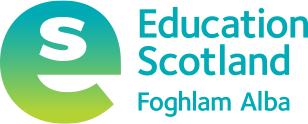Dyslexia Toolkit
The Addressing Dyslexia Toolkit supports Curriculum for Excellence and Getting It Right For Every Child (GIRFEC). It provides information and support for teachers and local authorities.
It also provides guidance on the process of supporting, assessing and monitoring literacy difficulties, which may be dyslexia, and gives details of relevant approaches and strategies.
Schools and local authorities can access this free resource and reflect and engage in a cycle of self-evaluation and improvement around dyslexia and inclusive practice.
Using the dyslexia toolkit
The toolkit can support you to reflect and evaluate on your own knowledge and understanding of dyslexia.
Use the information to improve practice, develop identification pathways and approaches to support.
The toolkit can be used by individuals or by a group of practitioners during training sessions.
Within the toolkit there are a range of professional learning resources which will:
- support you to develop a deeper understanding of dyslexia and inclusive practice
- inform meaningful career-long professional learning for improving practice and improving outcomes for children and young people
- support you in achieving professional recognition for areas of enhanced accomplishment in their professional practice
Self-evaluation approach
Evaluative questions for schools and practitioners:
-
To what extent does our practice and support for dyslexia and additional support needs reflect the Scottish educational context?
-
How do we know that all staff have an awareness of the identification pathway/process of dyslexia?
-
To what extent do we support and secure improved achievement and attainment for children and young people with dyslexia and with literacy difficulties?
-
How do we know that our staff are appropriately directed to the toolkit; are provided with relevant professional learning opportunities and have taken steps to embed this into practice?
-
Do we offer our learners the opportunity to be actively involved in the development of their inclusive school community?
-
How do we know there is respectful and positive communication and engagement between children and young people, parents/carers, staff and partners for dyslexia and inclusion?
